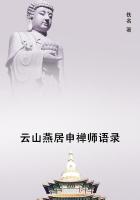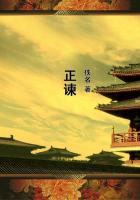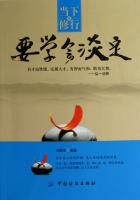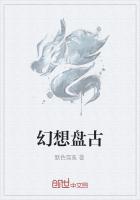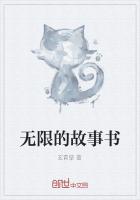In each group a fallen warrior lies at the feet of the goddess, over whom she extends her protection. The Aeginetan marbles show the traces of dying archai**. The figures of the warriors are strongly moulded, muscular, but without grace. The same type is reproduced again and again among them. Even the wounded scarcely depart from it. The statues of the eastern pediment are probably later in date than those of the western, and in the former the dying warrior exhibits actual weakness and pain. In the western pediment the statue of the goddess is thoroughly archaic, stiff, uncompromisingly harsh, the features frozen into a conventional smile. In the eastern group the goddess, though still ungraceful, is more distinctly in action, and seems about to take part in the struggle. The Heracles of the eastern pediment, a warrior supported on one knee and drawing his bow, is, for the time, wonderfully vivid and strong. All of these statues are evidence of the rapid progress which Greek sculpture was ****** in the fifth century against the demands of hieratic conventionality.
The contemporary Athenian school boasted the names of Hegias, Critios, and Nesiotes. Their works have all perished, but a copy of one of the most famous works of Critios and Nesiotes, the statue of the Tyrannicides, is to be found in the Museum of Naples. Harmodius and Aristogeiton killed, in 514 B.C., the tyrant-ruler of Athens, Hipparchus. In consequence of this Athens soon became a republic, and the names of the first rebels were held in great honor. Their statues were set up on the Acropolis, first a group by Antenor, then the group in question by Critios and Nesiotes after the first had been carried away by Xerxes. The heroes, as we learn from the copies in Naples, were represented as rushing forward, one with a naked sword flashing above his head, the other with a mantle for defence thrown over his left arm. They differ in every detail of action and pose, yet they exemplify the same emotion, a common impulse to perform the same deed.
At Argus, contemporary with these early schools of Athens and Aegina, was a school of artists depending on the fame of the great sculptor Ageladas. He was distinguished for his statues in bronze of Zeus and Heracles, but his great distinction is not through works of his own, but is due to the fact that he was the teacher of Myron, Polycleitos, and Pheidias. These names with those of Pythagoras and Calamis bring us to the glorious flowering time of Greek sculpture.
Calamis, somewhat older than the others, was an Athenian, at least by residence. He carried on the measure of perfection which Athenian sculpture had already attained, and added grace and charm to the already powerful model which earlier workers had left him. None of his works survive, but from notices of critics we know that he excelled especially in modelling horses and other animals. His two race-horses in memory of the victory of Hiero of Syracuse at Olympia in 468 were considered unsurpassable.
However, it is related that Praxiteles removed the charioteer from one of the groups of Calamis and replaced it by one of his own statues "that the men of Calamis might not be inferior to his horses." Thus it would appear that Calamis was less successful in dealing with the human body, though a statue of Aphrodite from his hand was proverbial, under the name Sosandra, for its grace and grave beauty.
Pythagoras of Rhegium carried on the realism, truth to nature, which was beginning to appear as an ideal of artistic representation. He is said to have been the first sculptor to mark the veins and sinews on the body.
In this vivid naturalness Pythagoras was himself far surpassed by Myron. Pythagoras had seen the importance of showing the effect of action in every portion of the body. Myron carried the minuteness of representation so far that his Statue of Ladas, the runner, was spoken of not as a runner, but as a BREATHER. This statue represented the victor of the foot-race falling, overstrained and dying, at the goal, the last breath from the tired lungs yet hovering upon the lips. More famous than the Ladas is the Discobolos , or disc-thrower, of which copies exist at Rome, one being at the Vatican, the other at the Palazzo Massimi alle Colonne. These, though doubtless far behind the original, serve to show the marvellous power of portraying intense action which the sculptor possessed. The athlete is represented at the precise instant when he has brought the greatest possible bodily strength into play in order to give to the disc its highest force. The body is bent forward, the toes of one foot cling to the ground, the muscles of the torso are strained, the whole body is in an attitude of violent tension which can endure only for an instant. Yet the face is free from contortion, free from any trace of effort, calm and beautiful.
This shows that Myron, intent as he was upon reproducing nature, could yet depart from his realistic formulae when the requirements of beautiful art demanded it.
The same delight in rapid momentary action which characterized the two statues of Myron already mentioned appears in a third, the statue of Marsyas astonished at the flute which Athene had thrown away, and which was to lead its finder into his fatal contest with Apollo. A copy of this work at the Lateran Museum represents the satyr starting back in a rapid mingling of desire and fear, which is stamped on his heavy face, as well as indicated in the movement of his body.
Myron's realism again found expression in the bronze cow, celebrated by the epigrams of contemporary poets for its striking naturalness. "Shepherd, pasture thy flock at a little distance, lest thinking thou seest the cow of Myron breathe, thou shouldst wish to lead it away with thine oxen," was one of them.

